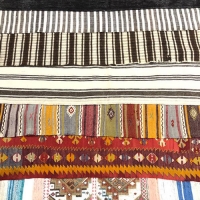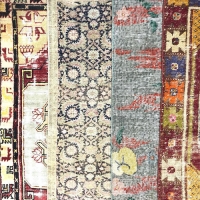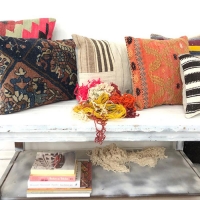
Carrying Kilim Weaving Art to Next Generation
One of the most representative aspects of traditional culture is hand woven rugs. They have always been a part of social culture. It is possible to see the importance of kilims in parallel with the development of the industrial sector after a certain period. In some periods, kilim weaving has lost blood in many places. In addition, the rugs weaving in some regions have become very careful in terms of technique, color, motif, composition properties and usage areas. At that time, the demand for such rugs was quite high.
In general, the fact that the majority of individuals engaged in rug weaving in the recent years is above middle age is an indication of a decrease in the interest in art. The fact that the young generation is not interested enough in this art emerges as an important problem in terms of the development of rugs. Another issue observed in some regions is that individuals who perform this art in the region make efforts to meet their own needs rather than making this art a profession. It is also seen that rugs weaved were also evaluated within the scope of the dowry tradition. It is obvious that the color, motif, composition and size properties of the kilim samples touched vary. These features have been sometimes referred to by that region. In certain periods, mostly rugs, black, blue, green, onion peel, walnut shell, buckthorn and sumac dyed with natural dyes are preferred.
Rugs woven at certain times, as well as floor coverings, sofa covers and sacks have been used as. The most commonly used motifs in rugs used in some regions are the baklava slice, the habbap (Nalın) pillar, the bird's belly, the chain navel, the elbow navel, the paw belly, the wheel of the finger, the finger belly, and the atomic belly. The societies have made the necessary efforts to keep the historical and cultural values alive and not to forget the rug weaving in order to carry them to the future. In addition, not only government agencies but also all non-governmental organizations are in various efforts. In this context, local governments and universities also entered into the cycle by making a series of academic studies against the corruption and forgetting of kilim art. For example, some universities have opened weaving departments. It has been observed that the effort to keep the art of kilim weaving alive at all times is shown every period.



